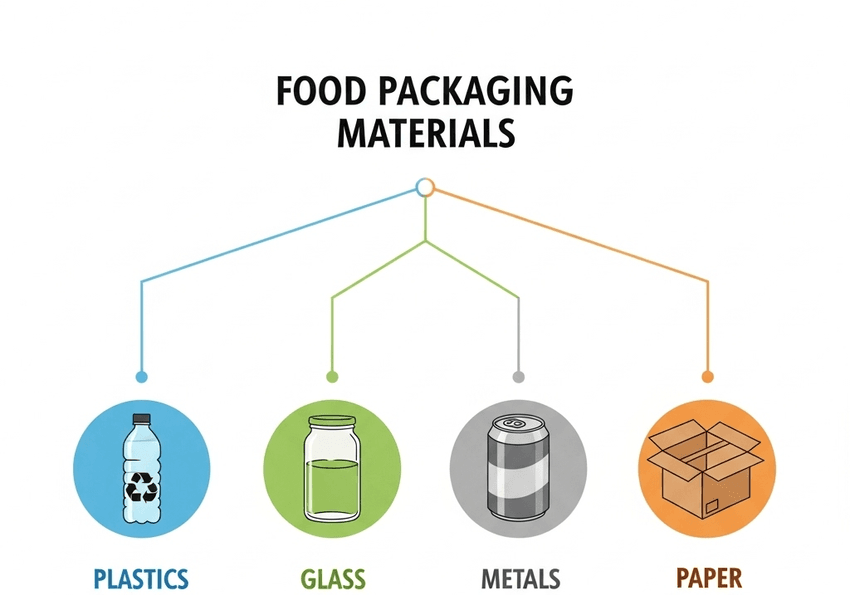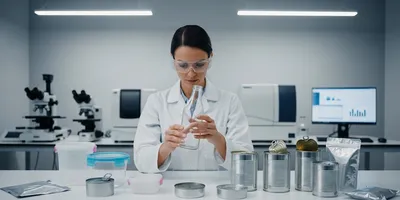Food packaging is far more than a simple container for products. It is a sophisticated scientific discipline that serves as a critical link between manufacturing and consumption. For laboratory professionals and food scientists, understanding the principles of effective food packaging is fundamental to ensuring product quality, safety, and commercial success. The choice of a package material and design involves complex considerations of chemistry, engineering, and microbiology.
The primary functions of food packaging include protecting the product from physical damage and environmental factors, providing a barrier against microbial and chemical contamination, and extending the product's shelf-life. A well-designed food packaging system also communicates vital information to the consumer, such as nutritional facts, ingredients, and storage instructions. As consumer demands shift toward sustainability and freshness, the field of food packaging science continues to innovate, developing new materials and technologies that meet these evolving needs without compromising safety.
Materials Science and Innovation in Food Packaging
The selection of a packaging material is a critical decision that dictates a product's safety, stability, and environmental impact. Each material offers a unique combination of properties, from barrier performance to cost and recyclability. A thorough understanding of these material characteristics is essential for developing a functional and sustainable food packaging solution.
Commonly used materials in food packaging include:

Plastics, glass, metals, and paper are the four main materials used in food packaging.
GEMINI (2025)
- Plastics:
- Properties: Lightweight, flexible, and offer excellent barrier properties against moisture and oxygen (depending on the polymer).
- Examples: Polyethylene (PE) for bags and films, Polyethylene Terephthalate (PET) for bottles and containers, and Polypropylene (PP) for tubs.
- Considerations: Plastic waste management and microplastic contamination are significant challenges.
- Glass:
- Properties: Chemically inert, non-porous, and provides an absolute barrier to all gases and vapors.
- Examples: Jars and bottles for sauces, beverages, and jams.
- Considerations: High weight, fragility, and energy-intensive manufacturing process.
- Metals:
- Properties: Excellent barrier against light, oxygen, moisture, and microorganisms. Strong and durable.
- Examples: Aluminum cans for beverages and tinplate steel cans for canned goods.
- Considerations: Opaque, which prevents product visibility.
- Paper and Paperboard:
- Properties: Inexpensive, lightweight, and easily printable for branding.
- Examples: Boxes for cereals, cartons for milk and juice (often coated with plastic or foil for barrier properties).
- Considerations: Poor barrier properties on its own, susceptible to moisture damage.
Ensuring Food Safety with Advanced Food Packaging
Food packaging plays a pivotal role in protecting products from microbial contamination and chemical degradation. This protective function is paramount for preventing foodborne illness and ensuring the integrity of the product from the processing plant to the consumer's table. Advanced food packaging technologies have evolved to offer dynamic, rather than just passive, protection.
- Active Packaging: These systems actively interact with the food or the package's internal environment to extend shelf-life or improve safety. Examples include oxygen scavengers that absorb residual oxygen to prevent oxidation and moisture absorbers that control humidity to prevent microbial growth.
- Intelligent Packaging: This technology monitors the condition of the food and provides real-time information. It can include time-temperature indicators that show if the product has been stored outside of a safe temperature range, or freshness indicators that change color to signal spoilage.
Regulatory standards, such as those from the Food and Drug Administration (FDA) and the European Food Safety Authority (EFSA), govern the safety of food packaging materials. These regulations ensure that no harmful substances migrate from the packaging into the food and that materials are fit for their intended use. Compliance with these standards is a mandatory aspect of food packaging development and quality assurance.
Maximizing Shelf-Life through Strategic Food Packaging
Shelf-life extension is a primary objective of modern food packaging. By creating a controlled microenvironment around the product, packaging can effectively slow down the natural processes of degradation, including microbial growth, enzymatic browning, and oxidation.
- Modified Atmosphere Packaging (MAP): This technique involves altering the composition of the gas inside the package to create an optimal environment for preservation. Common gas mixtures include varying levels of nitrogen, carbon dioxide, and oxygen. For example, a high concentration of nitrogen can displace oxygen to prevent oxidation, while carbon dioxide can inhibit microbial growth. MAP is widely used for fresh produce, meats, and baked goods.
- Vacuum Packaging: In this process, all air is removed from the package before it is sealed. This creates a vacuum, which eliminates oxygen and significantly inhibits the growth of aerobic microorganisms, such as molds and bacteria. Vacuum packaging is highly effective for products like cured meats, cheese, and coffee.
- Light and Moisture Barriers: Exposure to light, particularly ultraviolet (UV) light, can degrade vitamins and pigments, leading to off-flavors and color changes. Similarly, moisture transfer can affect texture and promote microbial activity. Packaging materials are engineered with specific barrier properties to mitigate these effects. For instance, aluminum foil provides an excellent light and moisture barrier, while certain plastic films are designed to be selectively permeable to control gas exchange.
The Future of Food Packaging
Food packaging science is at a pivotal moment, driven by consumer demand for sustainability and the need for enhanced safety. The shift towards biodegradable, compostable, and recyclable materials is a major trend, pushing research into biopolymers and plant-based alternatives. At the same time, the integration of smart technologies is making packaging more dynamic and interactive, providing real-time data on freshness and safety. For professionals in the laboratory, the future of food packaging involves navigating the complex intersection of material innovation, regulatory compliance, and a commitment to minimizing environmental impact.
Frequently Asked Questions about Food Packaging
What is the primary purpose of food packaging?
The primary purpose of food packaging is to contain the product and protect it from physical, chemical, and microbial damage. It also plays a vital role in extending shelf-life, providing information, and facilitating product handling.
How does Modified Atmosphere Packaging (MAP) work?
MAP works by modifying the gas composition inside the package to an atmosphere different from ambient air. This typically involves reducing oxygen levels and increasing carbon dioxide or nitrogen to slow down respiration, prevent oxidation, and inhibit the growth of spoilage microorganisms.
Is all plastic food packaging the same?
No, plastic food packaging is not the same. It is made from a variety of polymers, each with distinct properties. For example, PET is a rigid, transparent plastic commonly used for bottles, while PE is a flexible plastic used for films and bags. The specific properties of each plastic dictate its suitability for a particular food product.
Lab Quality Management Certificate
The Lab Quality Management certificate is more than training—it’s a professional advantage.
Gain critical skills and IACET-approved CEUs that make a measurable difference.
What is the difference between active and intelligent packaging?
Active packaging actively changes the internal environment of the package to improve preservation (e.g., an oxygen scavenger). Intelligent packaging monitors the product and provides information to the user without directly changing the internal environment (e.g., a freshness indicator).













